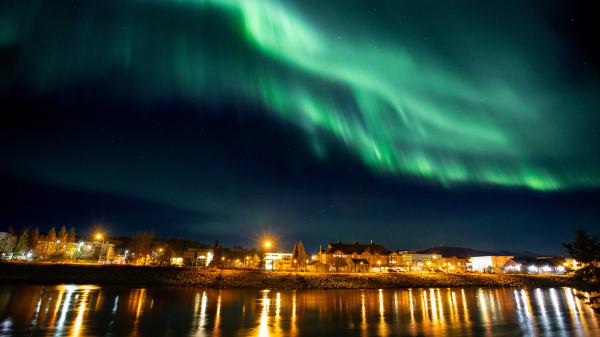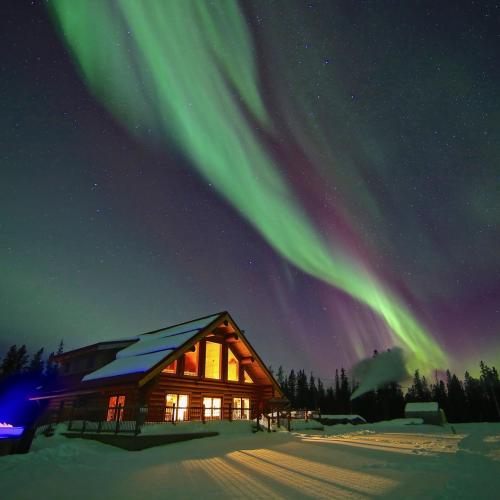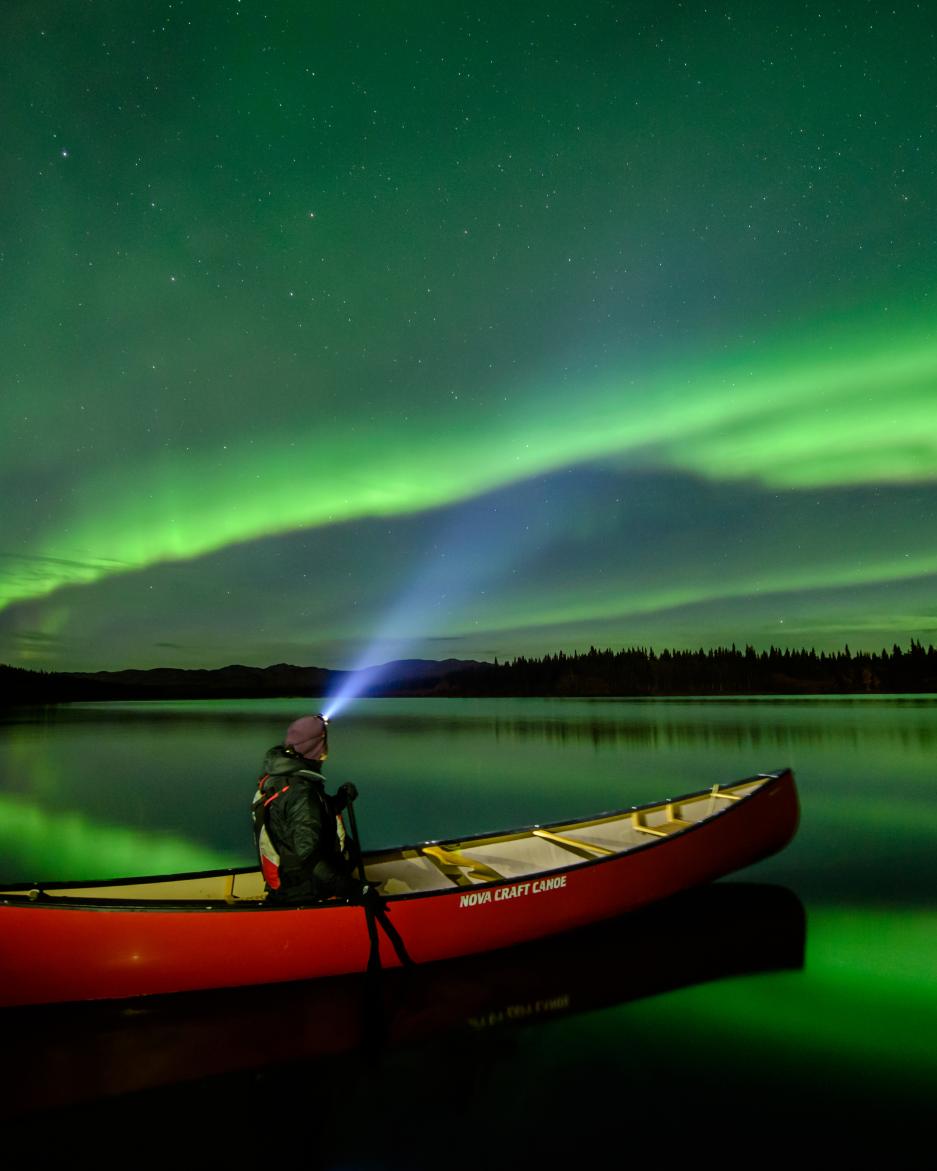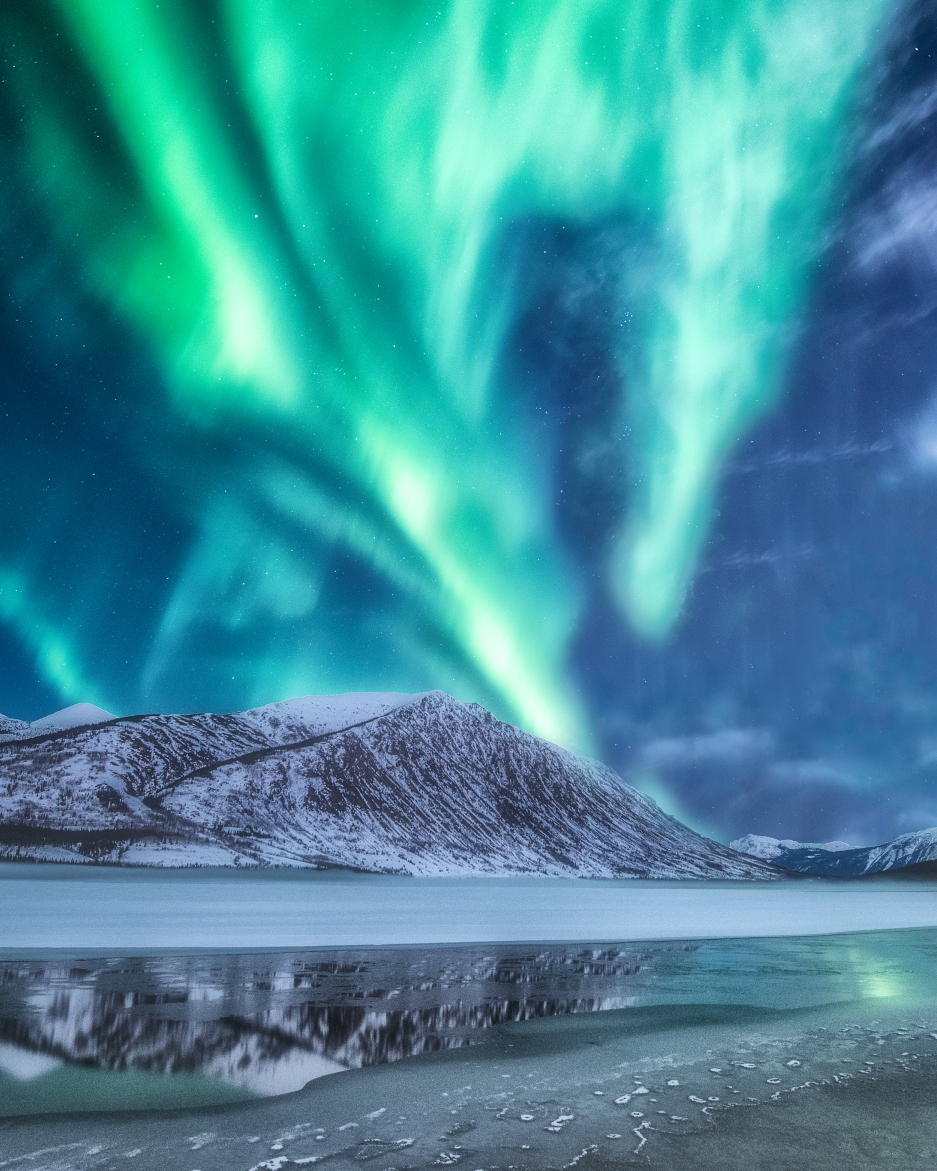
Northern lights

The thrill of seeing the northern lights will stay with your clients for the rest of their lives

Every show is different and each of them are magic. There’s next to no light pollution in the Yukon, and our dark, star-filled skies provide the perfect backdrop for the Northern Lights’ magical dance. Want to know how to sell Northern Lights viewing to your clients? We’ve got you covered.

Here's what you should know
The aurora is visible between late August and early April. There are two distinct viewing seasons: Autumn from mid-August to mid-October and Winter from mid-October to early April.
Tips to share with your clients- Best season Mid-August to mid-April
- Best time 10:00pm to 3:00am
There is no guarantee
Nature is nature. And just like you cannot bank on a sunny day when you need one, the Northern Lights cannot be counted on. Plus, if they appeared everynight at the same time, it would kind of take away some of the magic. Part of th excitement and experience is the anticipation, and hunting for them come nightfall. It's at that moment that you're just about to head back to bed when the sky often lights up, encouraging you to stay up a little later to soak it all in.
While it is possible to predict within a reasonable degree of certainty when the lights will be active based on solar activitiy, it is not a perfect science. Atmospheric and weather conditions and light coming off the moon often play a role as well. That's why we recommend a minimum three-night stay for your guests, to hopefully allow enough time for different conditions to line up and increase their odds. But even if the Northern Lights don't make an appearance, we guarantee the sea of stars in Yukon skies will still leave them looking at the sky long into nightfall.
It's all part of the package
The best way to present the northern lights is as part of a complete and comprehensive winter experience package. It should include interesting daytime activities, unique accommodations, a hearty culinary scene and spectacular winter scenery.
In the winter, travellers can try their hand at a myriad of quintessentially Canadian experiences. Mush their own team of sled dogs, speed across a frozen lake on a snowmobile, reel in something big while ice-fishing, or wander through the Boreal forest on snowshoes. At the end of the day, they can choose between a cozy cabin off-grid, or stylish digs on Whitehorse's Main Street and enjoy the amenities of city life. Throw in a few "only in the Yukon" winter festivals, and you will provide your clients with a spectacular Winter experience in the north.
A cozy place to come back to
There are two options when it comes to where your clients can base their adventures out of. Option one is a comfortable downtown hotel in Whitehorse. Tour operators will pick them up and drive them to custom built viewing sites for a few hours until they (hopefully) see the lights. Here, they can warm up in heated tents or yurts and gather around a campfire. This option allows them the ability to enjoy the comforts and luxury of city life.
Option two is a lodge or cabin stay. This choice is perfect for clients looking to get away from city noise and immerse themselves in Yukon wilderness. Accommodations range from rustic to luxurious, and can include daytime activities, gourmet meals, spa treatments and plenty of time to disconnect. Your clients will be spoiled for choice no matter what they choose based on their comfort levels. And if they want to view it from 36,000 feet on a B737 charging head first in whatever direction the Northern Lights are dancing? Well, we can arrange that too with Air North, Yukon's Airline. Contact the team to learn more.
The difference between fall and winter aurora
While they are a spectacle in every season, what you recommend to your clients should depend on the overall experience they want to have while they are here.
Fall Aurora
One of the less common attractions for the Yukon are the Fall colours. The landscape glows in hues of crimson, orange and yellow. Warmer than winter temps, visitors have a bit more selection when it comes to outdoor activities, as well as touring and sightseeing. The change of seasons from Summer to Fall also offers more opportunities for wildlife viewing as animals prepare for hibernation or migrate.

Winter aurora
Winter is the main Northern LIghts viewing season. And with that comes snow, frozen lakes, and the opportunity to experience uniquely northern activities. While it might be cold, the winter allows visitors to really experience a unique aspect of Yukon lifestyle, which is rooted in making the most of the winter season.

Frequently asked questions
-
We’re not going to lie... it can get cold here in winter. But the season is such an integral part of the Yukon lifestyle that it makes it one of the most interesting times to visit. Winters here are cold and dry with temperatures ranging from around zero degrees Celsius to the -20’s with occasional dips to 40 below. That’s why we recommend you encourage all your clients to purchase a winter clothing package (yes, even those of you in Canada!). And don’t forget the lip balm. As they say, there’s no such thing as bad weather, only inappropriate clothing.
-
Part of the fun of experiencing the Northern Lights are the bragging rights you get back home. Not to mention the social media likes! Northern lights photography is not as simple as snapping a photo of a beautiful landscape. If your clients are keen to try their hand at it we suggest they study up before leaving home. They’ll need a camera with a manual mode (and to know how to use it before they get here) and a tripod. But our best tip...remember to step back from the viewfinder and just soak in the majesty of the lights with your eyes.


